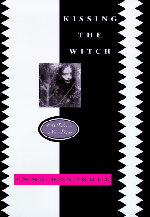
When the Brothers Grimm collected the tales told by the women of Germany, they might have thought they were recording the definitive versions of these stories. As scholars, they knew that these tales migrated from place to place and evolved with the times. By gathering them into one place, they may have believed that they would stop this mutable creature, the fairy tale. If so, they were extremely wrong.
The Grimm collection is, however, extremely influential to writers and tellers of fairy stories today, providing, in some cases, the source material as well as the literary precursor. Recent stories by authors like Ursula K. Le Guin (“The Poacher”), Charles de Lint (Jack, the Giant Killer), and Robin McKinley (Beauty) are riffs on the old, akin to the way that rap music samples classic rhythm and blues and uses it to provide the basis of their modern sound. While rap music is not for all tastes, it often encourages interest in the source material (as in the resurgence of interest in Blue Note records following the bestselling album by US3). The reworking of fairy tales shows modern readers that the classic stories have much to say about today’s world, by stripping the Disneyesque exterior of the stories and unearthing the archetypes that lurk beneath the surface.
Emma Donoghue’s name can now be linked to those above as a practitioner of this art. In her new book, Kissing the Witch, she incorporates the plot and themes of “Cinderella,” “Hansel and Gretel,” and “The Little Mermaid,” among many, and interconnects them into an ongoing thread of causal connections and relationships. Kissing the Witch is not quite a novel, for it does not follow any one character or place, and yet it is not quite a short story collection, although it is broken up into sections labelled like “The Tale of the Handkerchief.” Between each tale is a dream-like sequence, in which one character of the previous tale asks a question of another, which leads to the next tale. Like an ever-flowing river, the tales then drift by, separate yet connected. Sometimes a tale does not truly seem to be at an end when the thread is dropped to be picked up by another character, but that’s a minor quibble.
Connecting fairy tales together is not new. Stephen Sondheim and James Lapine managed to merge “Jack and the Beanstalk,” “Little Red Riding-Hood,” and “The Baker and His Wife” in their Broadway musical, Into the Woods. But Donoghue’s method is not quite the same. Sondheim and Lapine merged their tales; Donoghue strings hers together like a strand of pearls. In Into the Woods, the stories are pretty similar to those we know, at least until the second half which follows after the immortal line “…and then they lived happily ever after.” Donoghue’s fairy kingdom is rarely happy — before or after — and this is especially true for the women who provide the narrative thread. While some might find this off-putting, I found it quite refreshing, as this forces Donoghue into unlikely territory for fairies, a territory that is neither whimsical nor horrific, although it contains the elements of both. More than anything else, her fantasy resembles life, and that’s an accomplishment.
[Finished 1998; originally published on SF Site]
